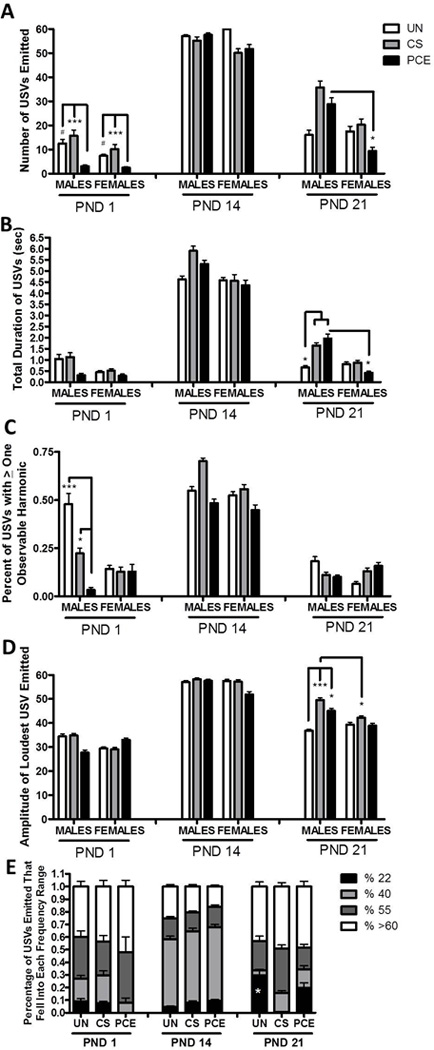Figure 1. Developmental Variations in Vocalizations on PND 1, 14, and 21 in rat male and female offspring following PCE, CS, or no prenatal exposure.

(A) Total number of USVs emitted by offspring on each respective test day. On PND 1 PCE offspring emitted fewer USVs compared to controls. On PND 21 PCE males emitted more USVs than PCE females. (B) Total duration of USVs. No significant differences were observed in total duration of USVs on PND 1 or 14. By PND 21 PCE and CS males showed a longer total duration of USVs compared to UN males. PCE males also had a greater total duration than PCE females. (C) Percentage of USVs emitted with at least one observable harmonic. PCE males showed a decrease in the percentage of calls emitted with an observable harmonic on PND 1 but not significant differences were observed between groups on PND 14 or 21. (D) Amplitude of the Loudest USV emitted. No significant differences in amplitude were observed on PND 1 or 14. On PND 21 PCE and CS males emitted USVs with louder amplitude than UN males. CS males also emitted USVs with at louder amplitudes than CS females. (E) Percentage of vocalizations emitted that fell into the 22, 40, 55, or greater than 60 kHz range for female offspring at each age of testing. PCE and CS female offspring emitted less 22 kHz USVs compared to UN females. Males (not shown) showed a similar pattern at each age but did not significantly differ in percentage of 22 kHz calls on PND 21. (***p<0.001, **p<0.01, * p<0.05; # p=0.06; N= 10–11 animals per treatment group and sex analyzed for vocalizations)
